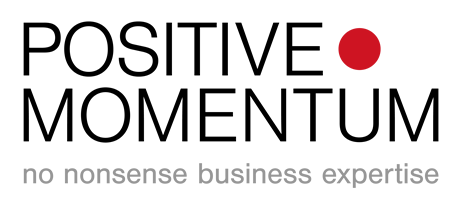I come from a content background. In a previous life I made 3000 hours of live breaking news, and launched & edited dozens of sites and content applications, but one of the biggest things I’ve learned in the last 2 years is that content is more and more the preserve of all businesses, particularly non-media businesses.
And in the last year I’ve realised that there are opportunities to use content beyond marketing, in new ways, to supercharge the value your company brings to the world, reimagine how you make an impact, and even create new revenue streams. Slack was born by a group of game designers who realised that the tool they had created to help them work together was actually a breakthrough opportunity in itself. I’m talking about Content Capital, and here are 5 ways to pull the Content Capital Lever.
Understand the questions: focus your thought leadership
You and your business are really good at something. You solve a problem for your customers. And it’s likely that others are looking for answers either to that problem, or to similar problems. You can better understand what questions you can answer by using search keyword analysis. If you have a website, you can find out how much traffic comes to your site through search, and more specifically what questions your visitors are getting answered on your site. But how do you find out what questions you could be answering, but aren’t yet? With keyword analysis tools like keywordtool.io you can find out what search terms, or questions are being asked on the internet every day, and how many times a day. Google Trends does a similar job, but not to the same level of granularity.
Use this intel to find out what questions future clients are asking, which you could answer, but which you’re not yet. And the answers you provide can take many forms – as we’ll see next.
Find the best way to answer: Determine the best medium & platforms which work for you
It doesn’t all have to be articles. The democratisation of creative technology has moved on from word processing. You can write articles, and you can create videos or podcasts. It’s now easy (even I can do it) to create websites (or microsites – single function websites).
An enterprising journalism graduate, Ffion Clarke, distributed her CV on TikTok last month. It’s all about showing you understand and know how to reach your target audience. In this case, she was one step ahead of most hiring managers: she was showing that she could reach the audience that her future workplace should be reaching. (Sure enough, she got snapped up by Crowd Network.) I even created an internet radio stationover the Spring of this year. While we’re all suffering from Zoom fatigue, software like OBS enables you to elevate your video conference from the ‘mute all / switch off video / is it me or you’ drudgery into a slick live stream mixing camera sources and adding graphics, which can either go out live or be replayed later.
You could make your operating system as a set of tools, a course, or a piece of software, for example a diagnostic or a process mapper, which you can license to users. It’s still content as a product.
Productise your IP
Many companies still rely on people power. Frankly, thank goodness they do, because as I’ve written before, we humans aren’t going away, technology can take care of the artificial intelligence, while we focus on emotional intelligence. Businesses which rely heavily on human capital (yuk, sorry – people) are generally valued at 1x revenue, rather 10x plus, in the case of digitally accelerated businesses. That’s because digital businesses are more easily scalable. But you can increase the value of your business by bottling and selling your secret sauce.
One of the best examples I’ve come across recently is the wonderful A&JSmart, a design agency in Berlin who are arch exponents of Google’s Design Sprint. While they can’t lay claim to the Design Sprint, their founder Jonathan Courtney has released a book about running efficient workshops and an e-learning series to help others to become great workshoppers.
What’s your operating system? That’s the part of your business which is scalable, and holds real value which can endure, and possibly allow you to go and create something else just as wonderful.
Determine the right business model to scale your new Content Capital.
Now it’s time to think like a publisher. Your content has value, so what’s the best way to realise that value? That depends on the shelf life of the content, and how you anticipate it being consumed. Is it permanent? In which case it can a book or e-book might be appropriate. Does it exist in a series of incremental steps? In which case a subscription would work. Does it live and breathe, and grow with time, for example to stay current? A digital product which trades on currency – subscription or membership again. (Although consider the cost of maintenance and management.) Do you charge per user, as a unit, or does a Software as a Service licensing model make sense?
When it comes to understanding price, you need to make the argument for investment, and underline the return a customer could make on that outlay. Make it a no-brainer for your customers.
Create a funnel
Finally, help your consumers through the journey to purchasing your content. Drive awareness with free samples perhaps distributed in social media, accelerate consideration with a free trial, and make it easy to purchase with a friction-free experience to transact (make it a no-brainer again). You can use a mix of media and platforms to perform the functions through the funnel.
2020 has presented us all with a heap of challenges, but it’s also unleashed a swathe of opportunities to take your business’s superpowers to a new set of customers. The next phase in the digital transformation of media is right here, in non-media businesses.








